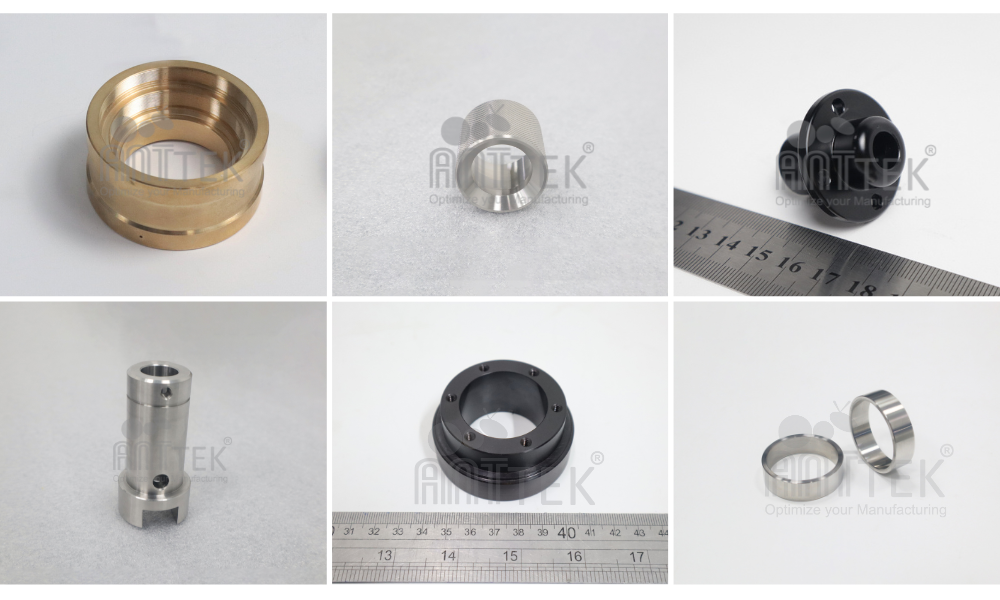Metal turning, a fundamental process in precision machining, involves the removal of material from a workpiece to achieve the desired shape and dimensions. While it is a well-established practice, there are common mistakes that machinists often encounter during the metal turning process. Understanding and addressing these errors is crucial for achieving high-quality and accurate results. In this article, we will explore some of the most frequent mistakes made when turning metal and discuss ways to avoid them.
Common mistakes when turning metal
Inadequate Tool Selection
One of the primary mistakes in metal turning is using the wrong cutting tools for the job. The selection of tools depends on factors such as the type of metal, cutting speed, and depth of cut. Using an inappropriate tool can lead to poor surface finish, increased tool wear, and compromised dimensional accuracy. Machinists should carefully choose the right tool for each specific application to ensure optimal performance.
Incorrect Cutting Speeds and Feeds
Optimal cutting speeds and feeds play a crucial role in metal turning. Operating at speeds that are too high or too low can result in issues such as excessive tool wear, poor surface finish, and even damage to the workpiece. It’s essential to consult machining charts and guidelines to determine the correct cutting speeds and feeds for the chosen material. Machinists should also consider the type of cutting tool and the desired surface finish when adjusting these parameters.
Poor Lubrication and Cooling
Inadequate lubrication and cooling during the metal turning process can lead to several problems, including thermal damage to the workpiece and accelerated tool wear. Proper coolant application is essential to dissipate heat and prolong tool life. Additionally, using the right cutting fluid for the specific metal being turned is crucial. Regular monitoring of coolant levels and quality ensures consistent performance and helps prevent thermal-related issues. Improper Tool Alignment
Tool misalignment is a common mistake that can result in uneven cuts, poor surface finish, and increased tool wear. Machinists should regularly check and adjust the tool alignment to ensure it is parallel to the workpiece. Proper alignment is crucial for achieving accurate dimensions and maintaining the overall integrity of the machining process.
Neglecting Tool Maintenance
Regular tool maintenance is often overlooked but is vital for successful metal turning. Dull or damaged cutting tools can lead to suboptimal results, increased cutting forces, and even damage to the workpiece. Machinists should routinely inspect and replace worn-out tools, ensuring that they are always in optimal condition for the task at hand.
How to avoid common mistakes when turning metal
Avoiding common mistakes when turning metal is crucial to ensuring a successful and efficient machining process. Here are some key guidelines to help you avoid these pitfalls and achieve better results
Select the Right Tools
- Understand the Material: Different metals require specific cutting tools. Familiarize yourself with the properties of the metal you are working with and choose tools designed for that material.
- Consider Tool Geometry: Ensure that the tool geometry aligns with the cutting requirements. Pay attention to factors such as rake angle, clearance angle, and tool coatings.
Optimize Cutting Speeds and Feeds
- Refer to Machining Charts: Consult machining charts and guidelines provided by tool manufacturers or machining handbooks to determine the recommended cutting speeds and feeds for the specific material.
- Adapt to the Material: Adjust cutting speeds and feeds based on the hardness and composition of the metal. Experimentation and experience can help fine-tune these parameters.
Implement Proper Lubrication and Cooling
- Use the Right Coolant: Choose the appropriate cutting fluid for the metal being turned. Different metals may require specific types of coolant to ensure effective heat dissipation and lubrication.
- Monitor Coolant Levels: Regularly check coolant levels and replace or replenish as needed. Maintaining the right coolant concentration is essential for optimal performance.
Check and Maintain Tool Alignment
- Regular Inspections: Conduct regular checks to ensure that cutting tools are correctly aligned. Misalignment can lead to uneven cuts and compromise the overall precision of the machining process.
- Calibrate Equipment: Periodically calibrate your machining equipment, including the tool holder and turret, to ensure proper alignment and accuracy.
Prioritize Tool Maintenance
- Routine Inspections: Regularly inspect cutting tools for signs of wear, chipping, or damage. Replace dull or damaged tools promptly to avoid poor performance.
- Implement a Maintenance Schedule: Establish a routine maintenance schedule for your cutting tools, including sharpening or replacement as needed.
Optimize Machining Parameters
- Depth of Cut: Adjust the depth of cut based on the material and the rigidity of the setup. Avoid excessive cutting depths that can lead to tool deflection and poor surface finish.
- Tool Engagement: Optimize the engagement of the cutting tool with the workpiece to balance material removal rates with tool life.
Anttek Vietnam – Prestigious and quality CNC processing
Anttek Vietnam is proud to be a leading CNC designer and machinist, providing high-quality and reliable products to customers. With many years of experience in the field of jig design and processing, Anttek Vietnam has been a reliable partner for domestic and foreign customers.
Contact us now to: IMPROVE PRODUCT QUALITY – OPTIMIZE COSTS – ENSURE DELIVERY SCHEDULE
For details, please contact:
- Factory: Lot 6, Lai Xa Industrial Zone, Kim Chung Commune, Hoai Duc District, Hanoi City, Vietnam
- Hotline:( +84)988 688 336
- Email:truong.nx@anttekvietnam.com
- Website: https://anttekvietnam.vn




